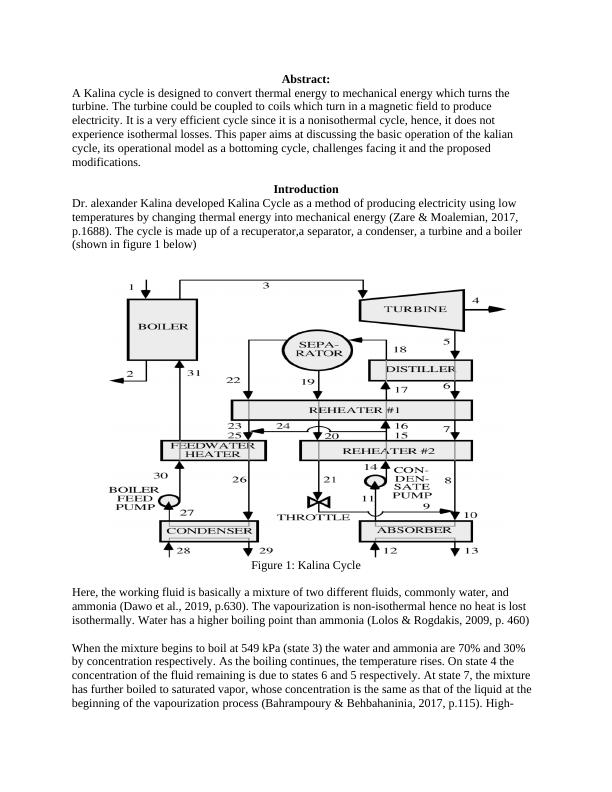Overview of Kalina Cycle | Report
The assignment is about the Kalina Cycle.
5 Pages1276 Words18 Views
Added on 2022-09-01
Overview of Kalina Cycle | Report
The assignment is about the Kalina Cycle.
Added on 2022-09-01
ShareRelated Documents
End of preview
Want to access all the pages? Upload your documents or become a member.
Simulation of Kalina Cycle Using ees
|11
|1847
|9
Analysis of Organic Rankine Cycle
|6
|2317
|424
Effect of Temperature on Heat Pump Efficiency in Refrigerators, Air Conditioners, and Water Treatment Plants
|8
|3997
|193
Difference between Ideal and Real Vapour Cycle
|8
|1323
|65
Geothermal Energy Extraction: Processes and Efficiency
|6
|1042
|101
Thermodynamic Systems 12
|13
|2664
|277


